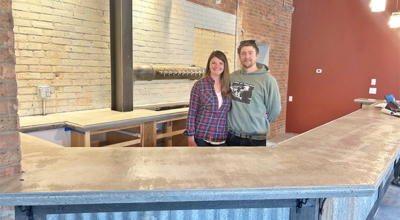Upton inspects pipe progress
Published 4:47 pm Tuesday, June 12, 2012

U.S. Rep. Fred Upton confers with Enbridge spokesman Joe Martucci Tuesday at the integrity dig site which closed Brownsville Street south of Cassopolis. If inspection determines a repair is required, the pipe section will be replaced or a pipe sleeve will be welded over the identified portion of the pipe to restore its integrity.
CASSOPOLIS — U.S. Rep. Fred Upton peers into a crater carved across Brownsville Street.
Brownsville will remain closed until the end of June while Enbridge Energy conducts an integrity dig, excavating a section of 1969 pipeline through which it moves western Canadian oil sands reserves and North Dakota crude to refineries across the Midwest, including Detroit, Whiting, Ind., near Chicago and Toledo.
This year Enbridge is replacing 75 miles, including five miles downstream of Niles (about August), Mendon, Marshall, Griffith and LaPorte and 50 miles downstream of Stockbridge.
Next year, Line 6B Phase 2 replaces 210 miles of existing crude oil pipeline in Michigan and Indiana, from Lake County, Ind., northeasterly to Marysville, creating more than 1,000 temporary and permanent jobs.
New pipe will be 36 inches in diameter, compared to 30 inches.
The project reduces future maintenance which disrupts landowners and restores the restricted capacity of Line 6B to half a million barrels a day to meet increasing demand driven by current and planned refinery upgrades and expansions in Michigan, Ohio and eastern Canada.
When Phase 2 is finished, Enbridge will have replaced the entire length of Line 6B with new pipe from Griffith, Ind., to the St. Clair River in Marysville.
Overall cost of the pipeline project is pegged at $1.3 billion for Michigan, plus another $300 million invested in Indiana.
Various approvals are necessary from the Michigan Public Service Commission and other state and federal agencies, such as the Army Corps of Engineers, the Michigan Department of Environmental Quality, the Michigan Department of Natural Resources and the Indiana Department of Environmental Management.
Enbridge maintains 11,200 miles of underground natural gas and petroleum pipelines, of which 2.5 million miles crisscross the country.
Project spokesman Joe Martucci of Troy said, “This pipeline is an important part of the energy infrastructure in Michigan and for the Midwest for gasoline, jet fuel, kerosene, asphalt and other products we use every day. We do these repairs all the time. Putting in new pipe will reduce repairs and add an extra measure of safety for residents.”
Americans use almost 20 million barrels of petroleum products daily.
Two summers ago a spill in Calhoun County brought pipeline safety to the forefront and “prompted Congress to act on a bipartisan basis,” Upton, R-Mich., said. “We improved safety standards for any new pipeline in the country — more shutoff valves, federal notification literally within an hour and higher fines. Calhoun County probably cost hundreds of millions of dollars. We saw gasoline prices spike this week 15 to 20 cents in large part because of refinery trouble in St. Louis. Rebuilding this pipeline double the strength at the cost of $4 million a mile should add some stability to prices, which impact all of Michigan. As it crosses rivers and streams, it may be bored underneath as much as 30 feet for protection.”
On July 25, 2010, Enbridge’s pipeline rupture in Marshall, east of Upton’s 6th District, resulted in the spill of 20,000 barrels of oil into Talmadge Creek, a tributary of the Kalamazoo River.
Upton, chairman of the House Energy and Commerce Committee, worked with former chairman John Dingell, D-Dearborn, to author the Pipeline Infrastructure and Community Protection Act (H.R. 2937). President Obama signed into law the final agreement on pipeline safety legislation.
“We are all too familiar with the unacceptable costs of catastrophe,” Upton said. “We have a tremendous opportunity to create thousands of good-paying jobs and meet our nation’s growing energy needs through the production of North American energy. These new safety standards will help make that a reality while making certain that the public health and our environment are safeguarded.”






